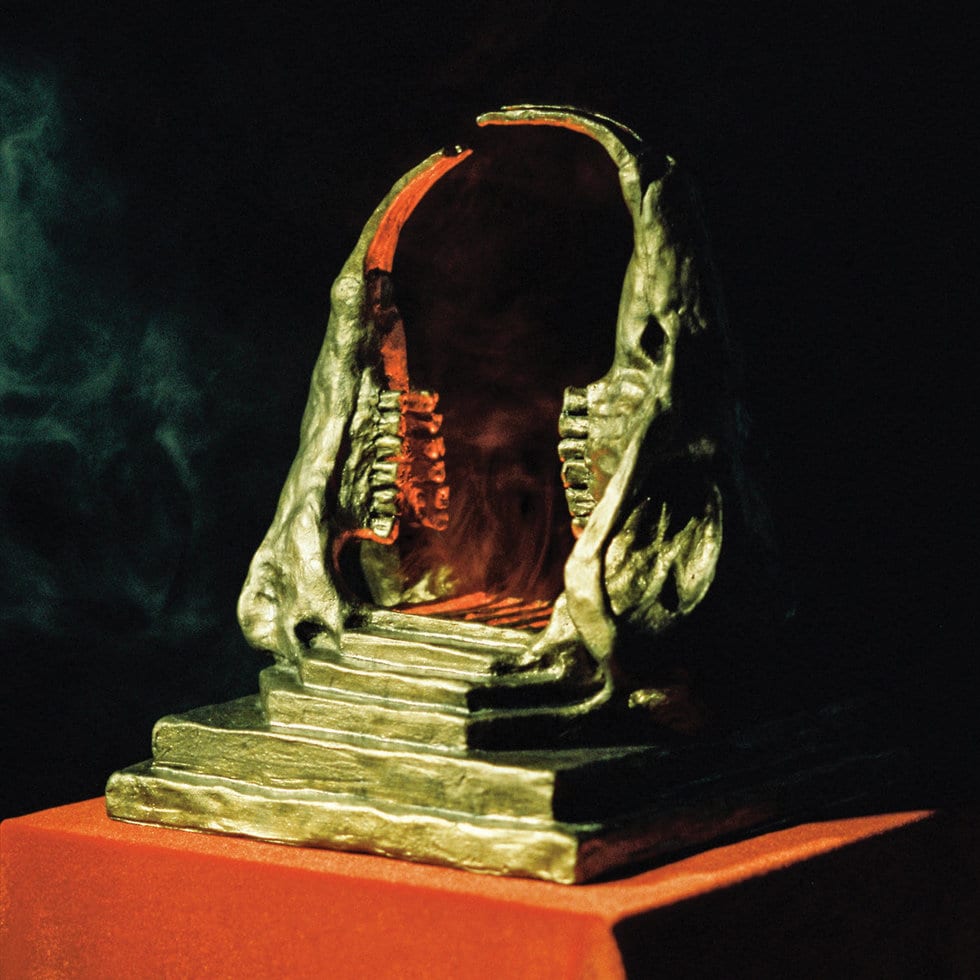
Given the volume of their discography, a new album release by Australian psychedelic garage rockers King Gizzard and the Lizard Wizard may seem unexciting. For a band that’s so prolific – famously releasing five albums in 2017 alone – it would be surprising if they weren’t releasing an album. So why get excited about their new release? Fortunately for their fans, King Gizzard are committed to reinvention, shifting their sound album-to-album and warranting their prolificity through the sheer musical variety of their albums. Their 15th studio album, Infest the Rats’ Nest, sees the band at their heaviest as they produce a love-letter to 1980s thrash metal.
Their penchant for metal has been visible in their past work – including their psychedelic garage rock album Nonagon Infinity which first garnered them widespread critical acclaim. But now King Gizzard have gone full metal, channeling their inner Metallica, Slayer, Exodus and Kreator to create an album full to the brim with chugging distorted guitars, frenetic drum fills, and rasping vocals. Infest the Rats’ Nest also represents a change in line-up as various commitments have pulled four of the bands’ regular members away, reducing the septuplet to a trio for the album.
Similar to their bluesy rock album Fishing for Fishies released earlier in the year, King Gizzard have again taken up the mantle of environmentalism to warn of the horrors of ecological exploitation. But where Fishing for Fishies was a tame and light-hearted warning of environmental destruction, Infest the Rats’ Nest is a brutal, fear-inducing harbinger of our impending existential doom as the band steps on the soapbox to paint the apocalyptic horror of the climate emergency.
Opening track “Planet B” vividly illustrates the horrors of the near-future. “Low on meals, browning fields / Bury children,” roars singer Stu Mackenzie, warning “there is no planet B” to replace a desolate earth. “Mars for the Rich” more broadly criticizes inequality in the context of the climate emergency, as the rich and powerful exploit the Red Planet for their own safety at the expense of the poor who are left to survive on earth. “Mars for the privileged / Earth for the poor.” The latter half of the album has a flowing cli-fi narrative, telling the story of a group of pioneers that leave earth and attempt to colonize Venus, only to be driven mad, die horrifically and enter hell. Possibly real, possibly metaphorical, you can never tell with King Gizzard.
The ferocity and brutality of thrash metal serve as a fitting accompaniment to these lyrical themes, suitably capturing the urgency and terror of the impending environmental crisis. Tracks like “Self-Immolate” rest on rapid fuzzed-out guitar chords, breakneck guitar licks, and thundering double kick drums that create a ferociousness maintained throughout the album. Other tracks like “Venusian 1”, feature more chugging guitars and sludgy bass rhythms, but are again replete with furious shredding guitars and bludgeoning blast beats. Complex vocal melodies are discarded for pithy growls and guttural stabs. “Make the incision / Careful precision / Blood minestrone / Decomposition,” Mackenzie abrasively shouts on “Organ Farmer”.
Despite the persistent aggression and viciousness of the album, it does well to remain fresh and engaging. “Perihelion” introduces goliath choral harmonies that add another level of hellishness to its sound and features a fantastically catchy chorus that is a highlight of the album. “Superbug”, the longest track of the album, develops from a sludging guitar riff into a minimalist arrangement of plodding bass and double-tracked vocals, and later a jam of bluesy guitar licks and shuffling drums. Similarly, closing track “Hell” transitions into a slower, heavier riff midway through, but is unfortunately given little time to be played out and provides a rather abrupt end to the song and album as a whole.
The introduction of a narrative on the latter half of the album does little to alter its sound or direction, and one could easily overlook the plot. But for keen listeners, the hellish imagery, cosmic story, and occasional self-referential lyricism make the narrative bizarrely enjoyable. King Gizzard have learned the importance of brevity from their previous foray into narrative-driven albums. While their 2017 progressive metal album Murder of the Universe suffered from unnecessary content, Infest the Rats’ Nest has a relatively concise runtime just shy of 35 minutes, with each song clocking in around the three- to four-minute mark, avoiding filler.
Although firmly set within the bounds of the genre, Infest the Rats’ Nest is not a total departure of King Gizzard’s past and refrains from sounding merely nostalgic. Signature to King Gizzard’s sound, there is an abundance of odd time signatures (fitting for a band that seems to be more comfortable playing in 7/4 than 4/4), a healthy use of wah pedals and overly delayed, squealy guitar leads, as well as the band’s usual jocular rhyming lyricism. “Space is the place for the human race / Chasing the race for the new place” as bellowed on “Perihilion”. The album ultimately sounds like King Gizzard’s take on thrash metal, rather than an attempt to regurgitate their favorite artists.
To label King Gizzard and the Lizard Wizard a psychedelic garage rock band seems like a misnomer when they so often explore other genres. On Infest the Rats’ Nest their garage rock roots are almost imperceptible, as they commit so heartily to thrash metal and produce an album placed firmly at the top of its genre.

